Capacitance is the ability to store charge. It is measured in farads (F) where one farad is equal to one coulomb per volt of potential difference.
Q = CV
Q is charge (coulombs)
C is capacitance (farads)
V is potential difference (V)
The symbol for a capacitor is shown below. When connecting it to a circuit make sure the positive end of the capacitor is connected to the positive terminal of the battery and the negative end of the capacitor is connected to the negative terminal of the battery.

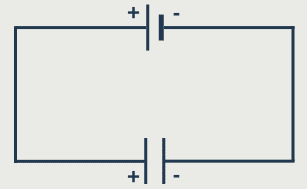
What is a Capacitor?
A capacitor is made up of two parallel metal plates. When connected to a power supply, a potential difference causes electrons to flow from one plate through the battery and onto the other. This results in one plate being positively charged +Q and the other being negatively charge -Q as it has gained electrons.
The larger the plates, the more charge you can store for a given potential difference. Therefore, area is proportional to capacitance, A ∝ C (A is the area of overlap of the two plates). In addition, as the separation between the two plates increases, capacitance decreases so, capacitance is inversely proportional to distance.
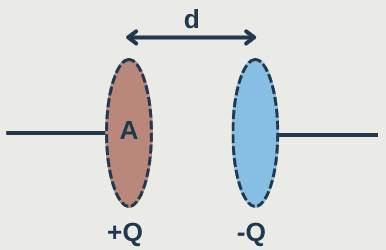
Using these relationships, we can form an equation:
C ∝ A and C ∝ 1/d so, C ∝ A/d
If the gap between the two plates is air, C = ε₀A/d where ε₀ is the permittivity of free space.
When a DC voltage is applied across the capacitor a uniform electric field forms between the two parallel plates. A dielectric material with dielectric constant εᵣ can be inserted between the two plates to increase the capacitance.
Dielectric constant = permittivity of the dielectric / permittivity of free space
εᵣ has no units as it is a ratio.
General equation for capacitance:

Dielectrics are usually made of solids but can also be liquids or gases where the particles are free to move around.
What if the dielectric consists of polar molecules?
The polar molecules will orientate themselves as shown below. They have their own electric field acting in the opposite direction to the electric field formed by the plates. As field strength is a vector, the net field strength between the plates reduces.
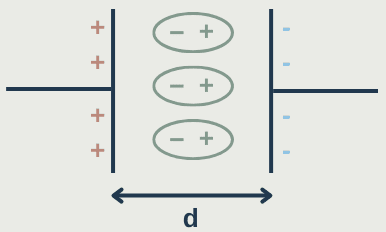
For a uniform electric field, E = V/d so if E (electric field strength) is reduced and d (distance) is fixed, V reduces in proportion to E.
Charge has to be conserved. As Q = CV, if V decreases then C increases. Hence, the insertion of a dielectric increases the capacitance.
What does capacitance depend on?
- area of the plates
- distance between the plates
- the dielectric constant (the permittivity of the insulating material – how easy it is for an electric field to pass through)
Energy Stored on a Capacitor
Using the equation Q = CV, we can plot a graph of potential difference against charge. The gradient of the line is equal to the capacitance and the area under the graph is equal to the energy stored on the capacitor.
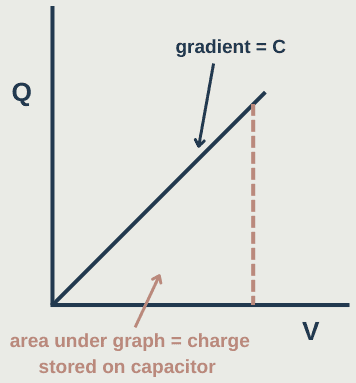
As the area under the graph is a triangle, we can write this as E = ½QV. By substituting in the original equation Q = CV we can also say that E = ½CV² and E = Q²/2C.
E = ½QV = ½CV² = Q²/2C
Charging and Discharging Capacitors
The capacitor connected in the circuit is initially uncharged. When the switch is closed, the capacitor immediately charges and the current is at a maximum.
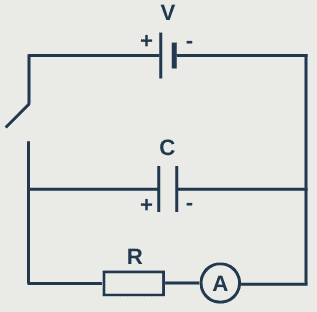
TO BE CONTINUED
